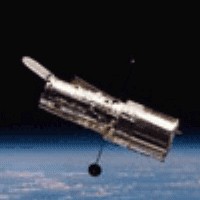The observation scheduler for HST that was developed was shown to scale to the full problem, producing observation schedules complete with all necessary enabling activities such as instrument reconfiguration, telescope repointing, data communication, etc. in a time frame acceptable for actual application. Complementary results demonstrated the ability of multi-perspective scheduling techniques to produce better quality schedules, in terms of balancing conflicting mission objectives, than a variant of the short-term scheduling algorithm currently being used in HST mission operations. More recently, HSTS has been used to develop of scheduler for application to a second orbiting telescope, the Small Wave SubMillimeter Astronomy Satellite (SWAS), currently due to be launched in June 1995. In collaboration with the SWAS mission team, we are currently evaluating the developed scheduler on full scale reference problems.
At CMU, we have incorporated HSTS solution representation and management concepts into the design of DITOPS a configurable, mixed-initiative planning and scheduling system.

